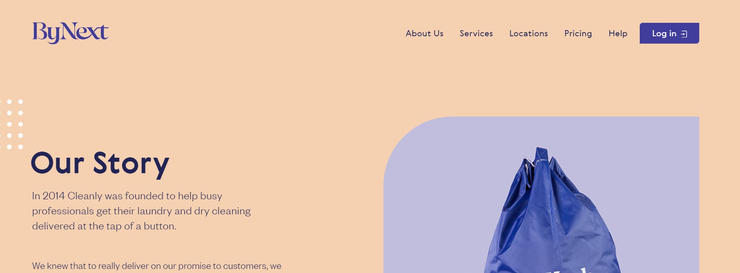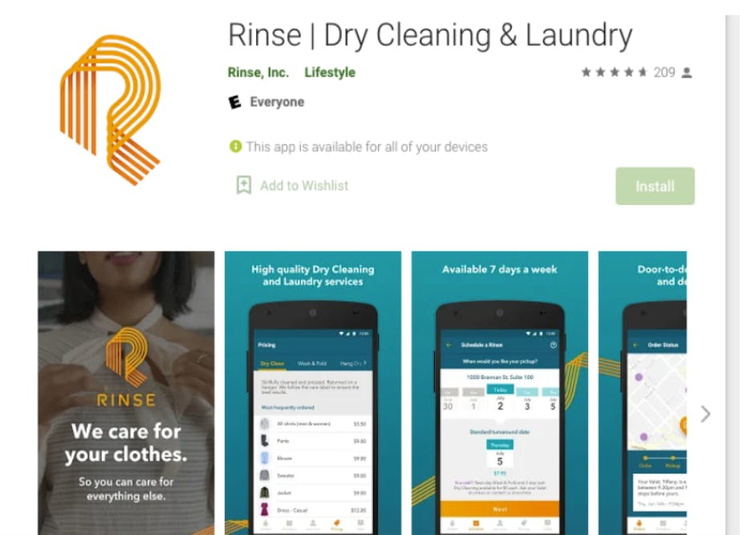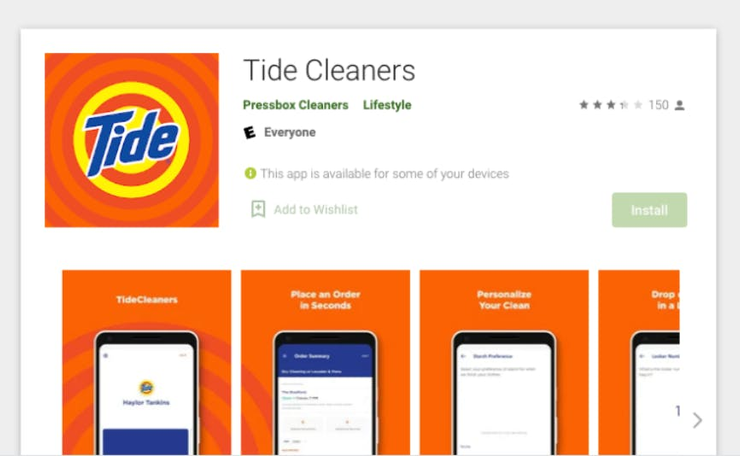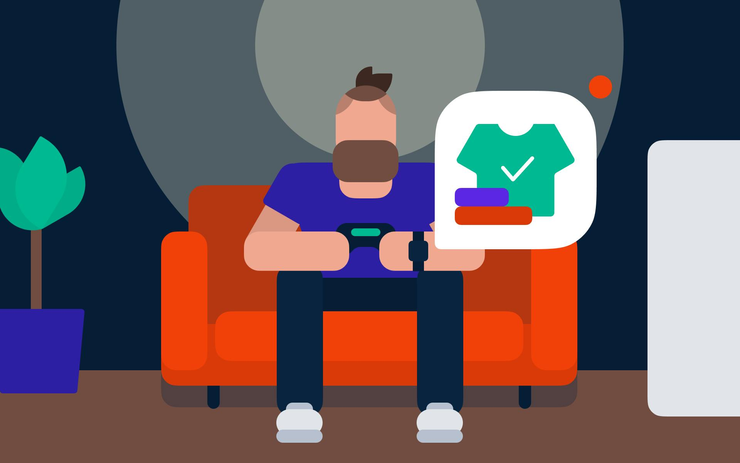On-Demand Laundry App Development: Must-Have Features and Development Tips
When the majority of millennials don’t want to spend their time on menial domestic work like laundry (even their own), and fewer people do on-site laundry these days, it comes as no surprise that coin-operated laundromats and the dry cleaning industry have declined. According to Census Bureau data, the number of laundry facilities in the U.S. fell by 20 percent since 2005, with particularly steep drops in urban areas.
If you have an on-site laundry business or are considering launching an online business that partners with laundry services, it’s worth developing an on-demand laundry app. Such an app can help you retain existing customers, attract new ones, and significantly boost your business’ income.
Join us as we air the not-so-dirty laundry on laundry apps. First up, let’s take a look at the market.
Market Overview: Why On-Demand Laundry Apps Are Gaining Popularity
Nowadays, it’s quite common to order both goods and services online. Since there’s a demand for online services, the number of apps offering on-demand services is growing rapidly, and, accordingly, laundry apps are gaining popularity. Currently, the leaders in this niche, with apps available on GooglePlay and AppStore, are ByNext, Rinse, and Tide Cleaners.
ByNext is a US laundry and dry cleaning service offering users dry cleaning, washing and folding, and home cleaning services via mobile app. The company appeared in 2019 after Cleanly and NextCleaners, two previous on-demand laundry service companies, merged. Now, ByNext is an omnichannel and omni-service provider for customers' home needs. By offering high-quality services to users, the company has quickly grown and acquired more and more satisfied customers.

Rinse is another US-based company offering its convenient laundry and dry cleaning delivery services via mobile app. The company works with local partners to clean and deliver clothes to customers’ doors. They offer individual cleaning preferences, explicit pricing, and accessible service seven days a week. The company also offers laundry pickup and delivery to workplaces, so employees can get clean clothes in just a few clicks.

Tide Cleaners is also a US on-demand laundry service. The company provides personalised washing, folding, and dry cleaning services through its intuitive, user-friendly app. A customer can simply drop clothes off at Tide Cleaners lockers, which are available 24/7, and then get a message when their clothes are ready to be picked up. Tide Cleaners uses an environmentally friendly cleaning process and provides eco laundry bags to first-time customers.

Although these companies operate successfully in the on-demand laundry service niche, the market is welcoming newcomers. According to research published in Business Wire, the online on-demand laundry service market will grow by US$58.02 billion from 2020 to 2024, indicating plenty of opportunities for newcomers to make their mark in this still-evolving market.
Among the main reasons people are turning to on-demand laundry apps over traditional laundromats are:
- To save time. In today’s fast and busy lifestyle, people prefer to spend time with family or on hobbies, not at laundromat facilities.
- Avoid unpleasant chores. Laundry is ranked among the top 10 most unpleasant household chores, so quite a lot of people would rather pay someone to have it done for them.
- Receive special offers. When people regularly use an on-demand laundry service, they can get involved in referral programs as well as receive special offers that save money, and who wouldn’t like to save extra money?
On-Demand Laundry Business Models
Before diving into the on-demand laundry business, you should consider the business model that suits you the best. Depending on your current situation and your future business plans, choose between three possible models.
- On-demand, on-site business model. Viable if you own a laundry/dry cleaning service business and have trained employees working for you. In this case, building a website and on-demand laundry app will help you boost your business and provide an excellent customer experience. By adding specific tech solutions, your customers will be able to schedule a laundry pick-up, receive notifications on laundry completion, get clothes delivered at a specific time, and pay for services easily. WashClub, a laundry in Brooklyn, NY, uses this model. The company decided to expand its business beyond its immediate neighbourhood via an app that offers laundry pickup and delivery services.
- On-demand, in-store model. Such a model suits businesspeople who don’t want to hire employees to pick up clothes. Instead, customers drop off clothes at special lockers located in specific areas in the city. By applying such a model, your customers can add details for each item, for example, to point out if an item requires special treatment, add delivery times, see the prices, and pay via the app. Tide Cleaners follows this model. At the lockers, users drop off their clothes then choose their required services via the app, which also provides notifications letting clients know their clothes are ready for pick up.
- Marketplace (aggregation model). This model is the best fit for startups that don’t have their own equipment. Basically, in this model, an app is like a marketplace and all services are completed by participating laundry providers, but transactions are processed by the marketplace operator. Entrepreneurs take their percentage from every transaction the platform processes. Besides, they will also have access to user profiles. Customers can give a rating after they’ve used the service, pick a laundry store based on other user ratings, and make easy transactions on the platform. For example, the company Laundapp uses this model. The company works with service suppliers and gives various prices that depend on both the supplier and the location.

Must-Have Features In an On-Demand Laundry App
On-demand laundry app development is a process that requires time, investment, and professional skill sets. Before you tap into this type of business, you should understand how these apps function in general, and what features are necessary for any on-demand laundry app. Typically, laundry apps include three separate user panels:
- Customer app
- Staff app
- Admin app
Let’s take a look at what’s involved in each.
Customer App
Incorporates customer information and is the place where customers can request laundry services. The basic features this panel requires are:
- Registration and log in. Users should be able to register easily and log in with their email or social media accounts.
- Select laundry services. Depending on their particular needs, customers should be able to choose different services, such as washing, ironing, or dry cleaning.
- Arrange pickup and delivery date. It should be convenient for users to choose a suitable time and date for laundry pickup.
- View order status and order history. Customers can track the status of their orders and view their order history.
- Get notifications about offers and discounts. Customers should be able to view all possible discounts and offers available.
- Calculate the price and pay online. It’s helpful if a customer can calculate the service cost so they know exactly how much they’ll pay, and, of course, they should be able to pay online.
- Write reviews. Customers should have a chance to share their thoughts with others and write reviews on the services provided.
Staff App
On this page, employees, service providers, and business owners can see all the information regarding customers and their orders. The main features of this panel are:
- Signup/log in. Every employee or service provider will log in with their work email.
- Manage profile and billing. A service provider needs access to all their assigned and pending requests, and a place to manage service fees.
- View and control order information (with preferred pick up and drop off times). The laundry service provider can see all their orders here and manage them accordingly.
- Confirm order status. A service provider can confirm all received orders.
- View customer’s location. In order to provide excellent service, it’s important that a provider pick up laundry as quickly as possible. And for that, it’s best to integrate a reliable navigation app. Read our guide on how to make a GPS navigation app for more information.
- View ratings and reviews. Each employee or service provider should be able to read customer reviews regarding their service.
Admin App
A main server that controls both the customer and staff/provider panels. Its main purpose, though, is to properly handle the database. The main features this panel requires are:
- Customer data (user management). All the information about customers, including their email addresses and orders, is stored here.
- Management of category manager. For each specific order, a category manager is assigned within this panel.
- Employee data. All employee information is kept here.
- Order history. Admins can see all orders placed and their status.
- Payment management. Admins can view and track transactions.
- Statistics and analytics. Admins can see and analyse pertinent data, such as the number of people using the app, the services ordered, as well as see all the ratings.

Optimising Your On-Demand Laundry App For Greater Revenue
While it’s important to include all the basic features described above, it’s no less critical to optimise the app for the best possible user experience. After all, when customers are satisfied, they will continue using it, writing positive reviews, and you receive a greater revenue.
Here are some tips on how to optimise an on-demand laundry app and make it eminently user-friendly:
- Create a simple design. Never underestimate the power of web design, as this directly impacts how your app looks and functions. Gone are the days of overcomplicated visuals, nowadays, people appreciate simplicity and a slightly personal touch. Additionally, the app should be understandable and easy-to-navigate.
- Organise content properly. Before ordering any service, people need to know what they’re going to get for their money. But if the most important information is hard to find in the app, or if there’s a lot of disordered information, users are inclined to simply close an app and never come back to it. Put yourself in your customer’s shoes and organise the app’s content properly.
- Track progress. Always read customer reviews and track if orders are completed. If for some reason, an order can’t be completed in a timely manner, apologise to your customer and work on ways to improve your app.
- Provide excellent customer support. Each customer is valuable, so you’ll want to ensure that each customer feels valued. Explain your services clearly, and have a place where customers can ask questions and receive support. To further improve customer support and take it to a whole new level, you can use emotion detection. At MadAppGang, we successfully completed a text-based emotion detection project. You can learn more about our text-based emotion detection project in our video.
Key Takeaways
The on-demand laundry app market is growing and will continue evolving. If you have an onsite laundry business, now is the best time to scale by developing an on-demand laundry app.
And if you are thinking about startup ideas, on-demand laundry apps are a profitable niche worth considering, as you can partner with laundry service providers and save money on equipment.
On-demand laundry app development is still a burgeoning industry, and since the market is not overloaded, creating a viable and profitable business is simply a matter of having a well thought out strategy.
Suppose you’re ready to dive into this business and want to build an on-demand laundry app but are completely new to the technical side of things. In that case, you can read more about the mobile development process, get more information about trends, monetization, planning, and costs associated with developing on-demand service apps, or drop us a line, we’re here to help you bring your on-demand laundry idea to life.
11 March 2021 laundry app development
